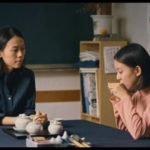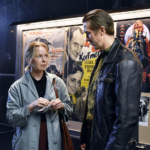Kenji Mizoguchi’s (1898-1956) films are in deep sharp contrast with those of the better know and more popular of his contemporaries, Akira Kurosawa. Some critics argue (like Bazin) that some of the films of the latter were heavily influenced by the films of John Ford et. al. and the Western genre, masterfully adapted to Japan’s own historical reality and culture. Mizoguchi is probably just the opposite.
This is clearly evident in Sansho the Bailiff (made in 1954, the same year as Kurosawa’s awesome Seven Samurai) which is undoubtedly a masterpiece for the ages. Mizoguchi is not only more lyrical but also much more social aware in his film-making, depicting in this one the tragic story of a family in feudal Japan whose fortunes go from bad to worse. The other fascinating element is that the film is essentially presented from a female point of view. This indeed seems to be a trait of most of Mizoguchi’s films including Ugestsu, The Life of Oharu and Street of Shame among others.
In spite of being so beautifully shot, with many long takes in which every move the actors make is carefully planned and captured in close detail (almost like a ballet), this film will break anyone’s heart.
I will never forget the last scene of the film (which is done in one long and beautiful take) when we are finally able to close the tragic circle. We are then left with a beautiful shot of the beach with a lonely and poor fisherman, all this in black and white. Needless to say, I was more than delighted when I read Anthony Lane’s beautiful review in the New Yorker. Not for weak hearts, that is for sure…





